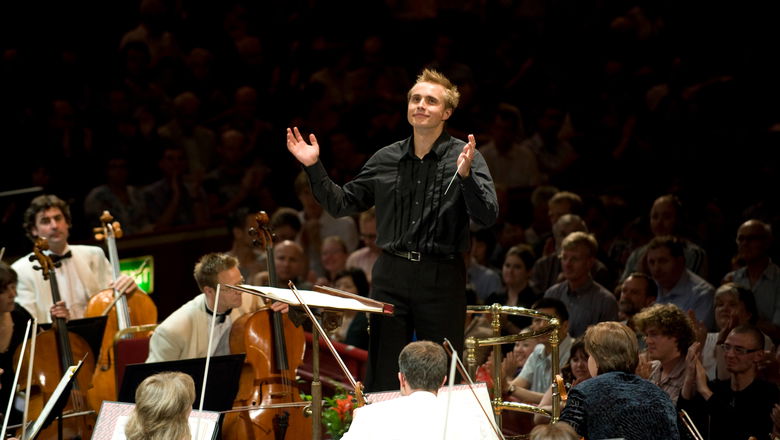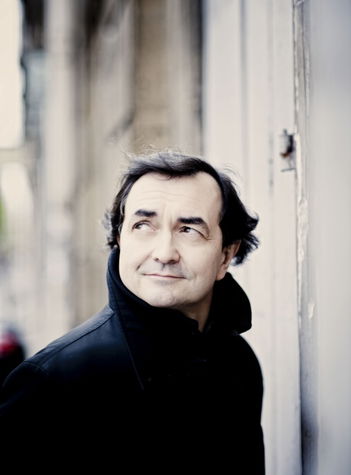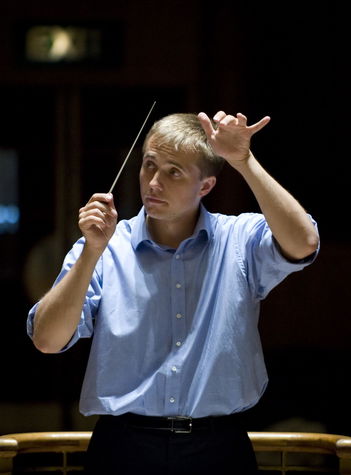We are not yet finished with Ravel today. He turned out to be the author of the most successful orchestration of Pictures at an Exhibition, an iconic work by the Russian composer Modest Petrovich Mussorgsky. Whether in the original version for piano or in an orchestral arrangement, it has been one of the composer’s most popular works for more than a century. Mussorgsky was an important figure in the period when the style of Russian classical music was taking shape. A phenomenal melodist, he was unafraid of unconventional procedures, perhaps in part because he was basically self-taught as a composer and an outsider in his personal life. His struggles with alcoholism led to his death at a rather early age.
A great friendship was behind the creation of Pictures from an Exhibition, originally a suite for piano. The painter and architect Viktor Hartmann had close ties to the “Mighty Handful”, a group of composers to which Mussorgsky belonged, alongside Mily Balakirev, Alexander Borodin, Nikolai Rimsky-Korsakov, and César Cui. Hartmann liked to employ elements of medieval Russian architecture and folk culture in his works. He died suddenly in 1873 at just 39 years of age. His friends, shaken by the tragic news, organised a retrospective exhibition of Hartmann’s sketches, watercolours, theatrical costume and set designs, and architectural studies, and after having attended the exhibition, Mussorgsky felt the need to capture the experience in music. Early in the summer of 1874, he completed his long, technically difficult suite for piano, admitting it had been written hastily in a letter to Vladimir Stasov, an arts critic and the organiser of the exhibition of Hartmann’s works: “Ideas, melodies come to me of their own accord. They come running to me, ready baked, and I swallow one after the other until I have overeaten. I can hardly put it all down on paper quickly enough.” The composer only wanted to play the suite for his friends, and he had no plans performing it in public or having it published. After Mussorgsky’s death Nikolai Rimsky-Korsakov decided to revise the composition and have it printed. It first found a place in the standard repertoire in an orchestral version commissioned from Maurice Ravel by the conductor Serge Koussevitsky in 1922. The result was the perfect combination of Russian Romanticism with the colourful orchestration that was typical of Paris in the early 20th century. Several composers have made attempts at orchestrating Pictures at an Exhibition, but only Ravel’s version has enjoyed wide acceptance.
The suite contains descriptions of ten of Hartmann’s paintings interspersed with repeated appearances of the striking Promenade theme, music that evokes walking through the exhibition. In one of his letters, Mussorgsky mentioned that the promenades were conceived grandly as a reflection of the bulk of his figure. The first picture, Gnomus, is a woodcut of a gnome presented as nutcracker angrily crushing nutshells in its jaws. For this reason, the music “jerks” with irregular rhythms and “cracks” with strong accents. Il vecchio castillo (The Old Castle) sounds like an Italian serenade of long ago, with its English horn melody and cello accompaniment evoking a troubadour’s song in front of a medieval Italian castle. Ravel makes a joke by using the saxophone in this otherwise archaicising movement. Tuileries depicts a park full of children playing and bickering while being watched by their nannies in the famous Parisian garden. The cumbersome music of Bydło (The Oxcart) reflects the hardships of life in the countryside, describing a peasant and an oxcart loaded with timber, the wheels turning with rhythmic regularity. The contrasting quick movement titled Dance of the Baby Chicks in Their Shells is based on a costume design by Hartmann—a dancer dressed in remnants of an eggshell is portrayed in music by a merry scherzo. Samuel Goldenberg and Schmuÿle are two Jews, one a rich authority figure, the other a poor, impudent man. The former is characterised by a powerful melody in the low register, and the other by shrill high notes. Both representations are satirical and reflect Russian antisemitism of the period. The picture of The Market in Limoges suggests swarms of people at a French town market, with shouting vendors, haggling, and arguments. In the subterrestrial Catacombae – Sepulcrum romanum, Hartmann painted himself walking with a lantern and observing bodies buried long ago. Mussorgsky conceived the music as a personal encounter with his deceased friend, and to the movement’s menacing chords and variations, he appended the final Promenade with the Latin subtitle Con mortuis in lingua mortua (With the Dead in a Dead Language). A picture of a bizarre clock in the shape of a hut on chicken legs was interpreted by Mussorgsky as the cabin of the witch Baba Yaga, and he created a demonic scherzo full of twisted harmonies and wild, virtuosic passages. The suite’s climax is the monumental Great Gate of Kiev, inspired by Hartmann’s architectural plan for the Bogatyr Gates in the Ukrainian capital. Into the movement, Mussorgsky inserted one last quote of the Promenade theme, a melody from the Orthodox liturgy, and the ringing of church bells, which assume their true form in Ravel’s orchestration, thereby creating a finale worthy of a work on such a grand scale. Here, with undoubted skill, a Russian artist is paying tribute to Kiev’s historical importance and sovereignty, albeit from a period Russian perspective. One hopes that such respect shall soon make itself felt in our modern times!




